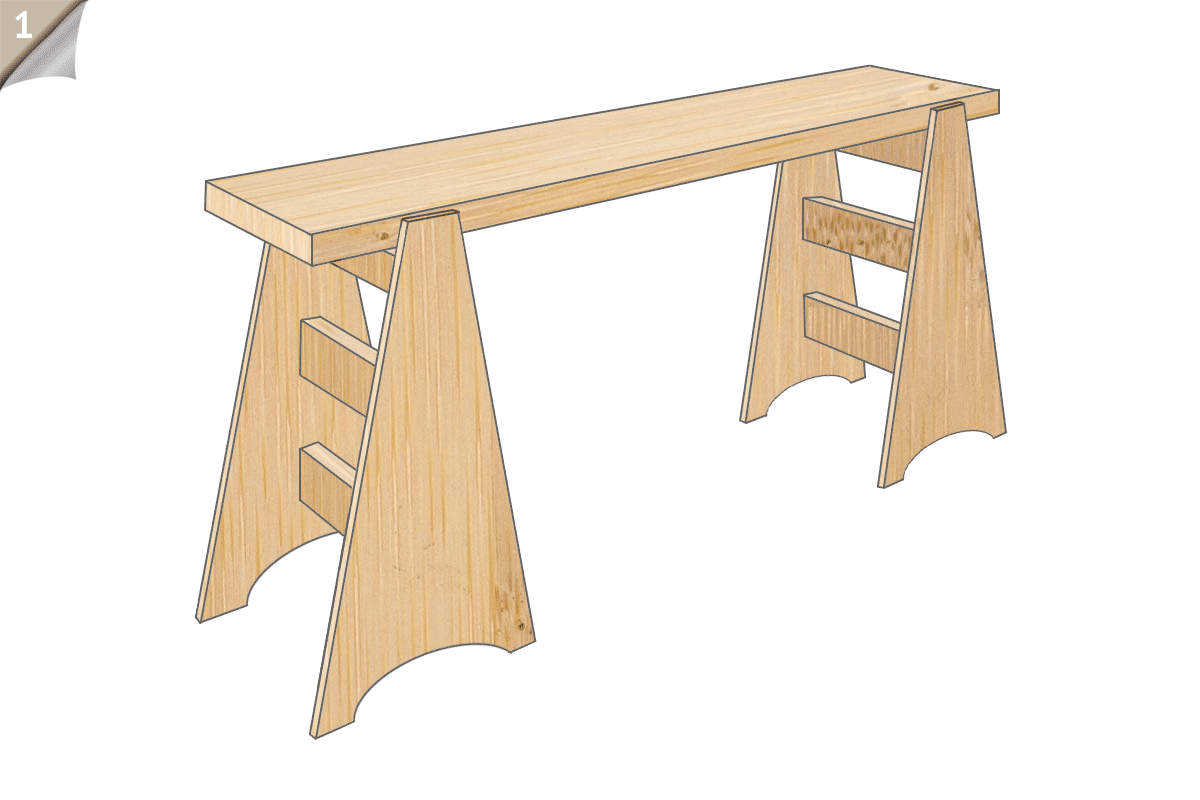
Easy DIY Projects: How to Build a Plywood Sawhorse
Author Chigwell Building & Joinery
Date 20/12/16
A simple step-by-step guide to making an adjustable, multifunctional sawhorse
If you're regularly involved in DIY projects, no doubt you've had many scenarios where a sawhorse would have saved you a lot of time and effort. Yet many retail sawhorses can be expensive, impractical and bulky. So what’s the answer?
We have the ideal home project that involves the simple construction of a multi-functional sawhorse using just a single sheet of 8” x 4” 18mm plywood that will do more than just a single job. This design will give you a strong frame to use for cutting long lengths of timber, large sheets of plywood or MDF and act as a sturdy scaffold platform that will take your weight for hard-to-reach jobs indoors. So let's get started and find out how you can make your own lightweight plywood sawhorse in no time!
Materials
Firstly, you'll need a full 2440 x 1220mm (8” x 4”) sheet of 18mm deep plywood. Unfortunately, MDF is not recommended as it is not strong enough for this particular project.
You'll also need boxes of 1” and 1.25” self-tapping wood screws, a jigsaw (or circular saw), an electric screwdriver (or regular screwdriver) and some good quality wood glue.
Cutting List
Your first task is to cut to shape and size all the components of the main support frames of the horse. Firstly, you'll need to cut a total of 4 side panels labelled (A) on the Figure 2. Each of these panels need to be the exact same size at 762mm tall by 406mm wide at the base and 101.5mm at the top centre point. By cutting them to this size, you should be able to get four from your single sheet of plywood, simply by cutting them alternately with two upright and two upside down, laying side-to-side.
Don't forget cut out a semi-circular shape at the base of each side panel. This will create “feet”, preventing the horse from rocking on uneven surfaces. The cutout doesn't have to be accurate but it's essential to have this to avoid an unstable sawhorse when in use.
Next we move onto the sawhorse worktop. Cut 2 lengths of plywood at 1651mm long by 400mm wide. These will form the table top of the sawhorse and be attached together later on to create a strong, weight bearing surface.
Now we need to cut out the support joists for the sawhorse frames. From the plywood you have left, you should be able to cut out 12 lengths of plywood measuring 406mm long by 102mm wide.
And finally, cut yourself two pieces of plywood at 400mm long by 25mm wide, which we'll attach the your final sawhorse worktop near the end of the build which will act as cleats to hold the top in place, when in use.
The Build
Firstly, create a set of 6 double-lined joists by attaching two together each with wood glue, labelled (C) on Figure 2 and as illustrated on Figure 3. Clamping them together whilst they dry will ensure they set accurately with no movement.
Once your double-lined joists have set, attach them along the centre vertical line of your side panels as marked in Figure 3, 51mm from the top of the side panel and then spaced top edge to top edge 228mm apart vertically. Use your 1.25” wood screws to attach the joist at either end to create your two horse bases, as shown in Figure 3. Once done you should have two sturdy based.
To create the worktop, you can take one of two directions. You can either simple attach the two sheets marked (D) in Figure 2 using a combination of wood glue and 1” screws to make a simple 36mm thick plywood base which will be sufficiently strong enough for basic jobs.
If however, you intend to use the sawhorse for other tasks such as a step scaffold that needs to bear significant weight, you will need to build an integrated subframe to add strength and rigidity to the sawhorse worktop. By following Figure 4, you can build a basic frame from leftover plywood or ideally from a few lengths of rough sawn kiln dried timber lengths at 19mm wide by 38mm in depth.
The subframe is fairly easy to build by cutting two strips to exactly the same length as your worktop at 1651mm and then adding 5 side joists incrementally 406mm apart, cut to 324mm in length. Attach the subframe simply by using 1” screws through the plywood worktop surface and additionally through the base sheet.
By adding the subframe, you significantly increase the overall strength of the worktop and reduce the possibility of bending, warping or even breaking under extreme pressure. If you have the materials at hand to do this, we highly recommend you follow this part of the instructions.
Finally, once your worktop is constructed, attach the two remaining cleats marked (B) on Figure 2 approximately 150mm from either edge. These will act as stops so that your sawhorse remains in place whilst in use.
Now you are ready to assemble and use your sawhorse for various cutting tasks and use any one of the three different set heights of the support joists as your scaffold platforms depending on the requirements of the job.
Finishing
If you want to give your sawhorse the finishing touch, give it a light sand with a thin coarse sandpaper, especially along the cut lines to remove any sharp edges or splinters and then you can either stain it with some good quality wood varnish or paint it with hard wearing exterior wood paint.

